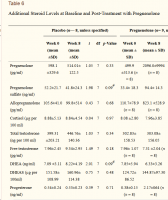tallglass13
Member
- Joined
- Dec 29, 2015
- Messages
- 840
Pregnenolone + biotin helps synthesize cortisol... cortisol is anti-inflammatory... and if we're constantly inflamed we would be using up all of our cortisol stores... Make sense that we would have to replenish those stores, just as we would have to replenish our B vitamins, glycogen or anything else that gets used a lot

